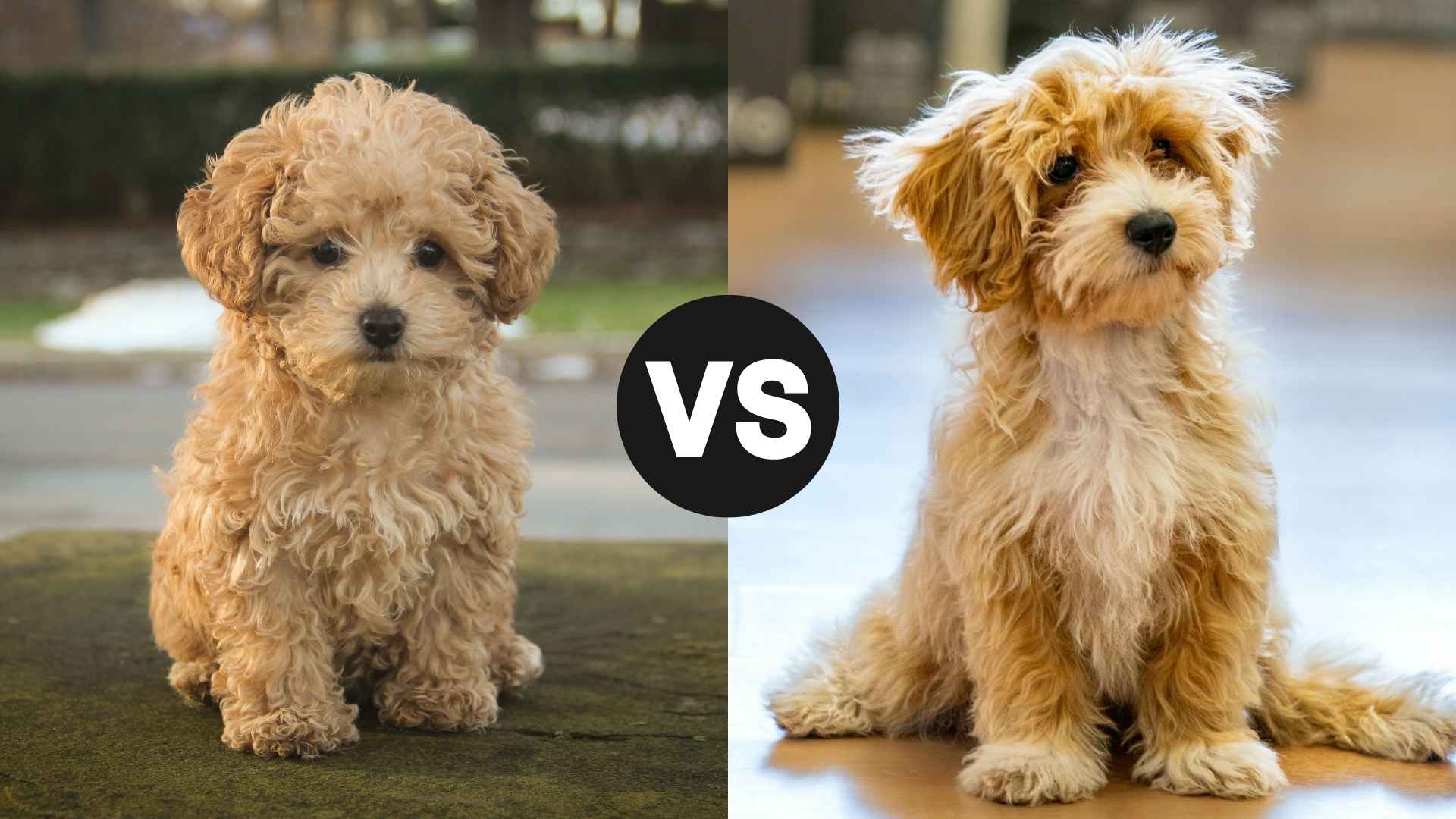Looking for an adorable, fluffy canine companion but can’t decide between a Toy Poodle and a Maltipoo? You’re not alone! These two small breeds are wildly popular, but they have some key differences that could make one a better fit for you than the other.
The Toy Poodle, a purebred with brains and elegance, is known for its sharp intelligence and hypoallergenic coat. On the other hand, the Maltipoo, a mix of a Maltese and a Toy Poodle, brings together the playful charm of both breeds while being a little more relaxed and affectionate.
Want a dog that’s easy to train and loves to show off? The Toy Poodle wins hands down. Prefer a cuddly, low-maintenance snuggle buddy? The Maltipoo might steal your heart.
Let’s break it down—size, temperament, grooming needs, and more—to help you find your perfect four-legged match!
Toy Poodle vs. Maltipoo: Key Differences
The Toy Poodle and Maltipoo may look similar, but they have distinct differences. Toy Poodles are purebred, highly intelligent, and excel in training, making them great for agility and obedience. They have a tightly curled, hypoallergenic coat that requires regular grooming.
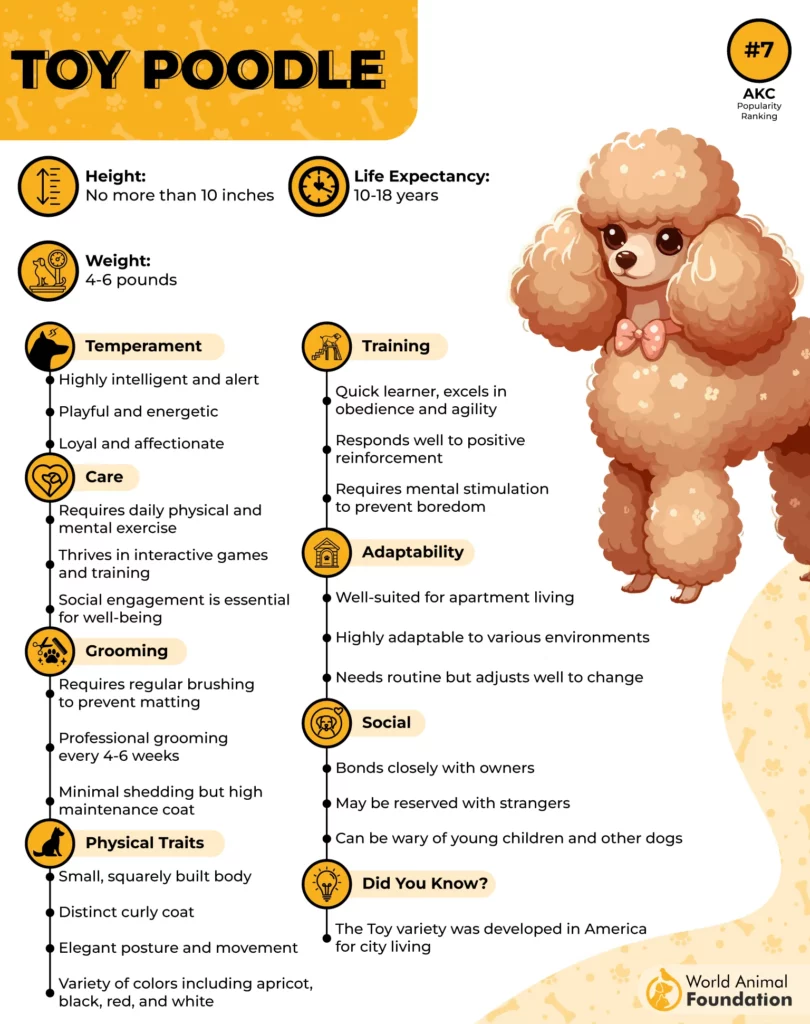
Maltipoos, a mix of Maltese and Toy Poodle, tend to be more affectionate and laid-back, with a softer, wavier coat that varies in texture. While both breeds are small and great for allergy sufferers, Toy Poodles are more energetic and need mental stimulation, whereas Maltipoos are cuddlier and ideal for relaxed, low-maintenance companionship.
|
Feature |
Toy Poodle |
Maltipoo |
|---|---|---|
|
Breed Type |
Purebred |
Mixed breed (Maltese + Toy Poodle) |
|
Size |
6-10 inches, 4-10 lbs |
6-14 inches, 5-20 lbs |
|
Coat Type |
Tightly curled, hypoallergenic |
Soft, wavy, or curly, varies |
|
Shedding |
Very low |
Low to moderate |
|
Temperament |
Intelligent, energetic, eager to please |
Affectionate, playful, more relaxed |
|
Trainability |
Highly trainable, quick learner |
Easy to train but can be stubborn |
|
Exercise Needs |
High, needs mental stimulation |
Moderate, enjoys playtime and cuddles |
|
Lifespan |
12-15 years |
10-15 years |
|
Best For |
Active owners, those wanting a highly trainable dog |
Families, seniors, people wanting a cuddly companion |
Toy Poodle vs. Maltipoo: Personality
Toy Poodle Personality
The Toy Poodle isn’t just a pretty face—it’s one of the smartest dog breeds out there! These little geniuses thrive on mental challenges and love learning tricks. Want a pup that can master commands in record time? A Toy Poodle will impress you with its quick wit and eagerness to please. But be warned—they can get bored easily, so they need plenty of interactive play and mental stimulation to stay happy.

Despite their posh looks, Toy Poodles are full of energy, of any size and are very active dogs, states AKC. They’re playful, lively, and love being the center of attention. Whether it’s a game of fetch or a long walk, these little dynamos need regular exercise to burn off their energy. Left alone too long? They might get a little dramatic and develop separation anxiety. They’re happiest when they’re with their humans, soaking up love and attention.
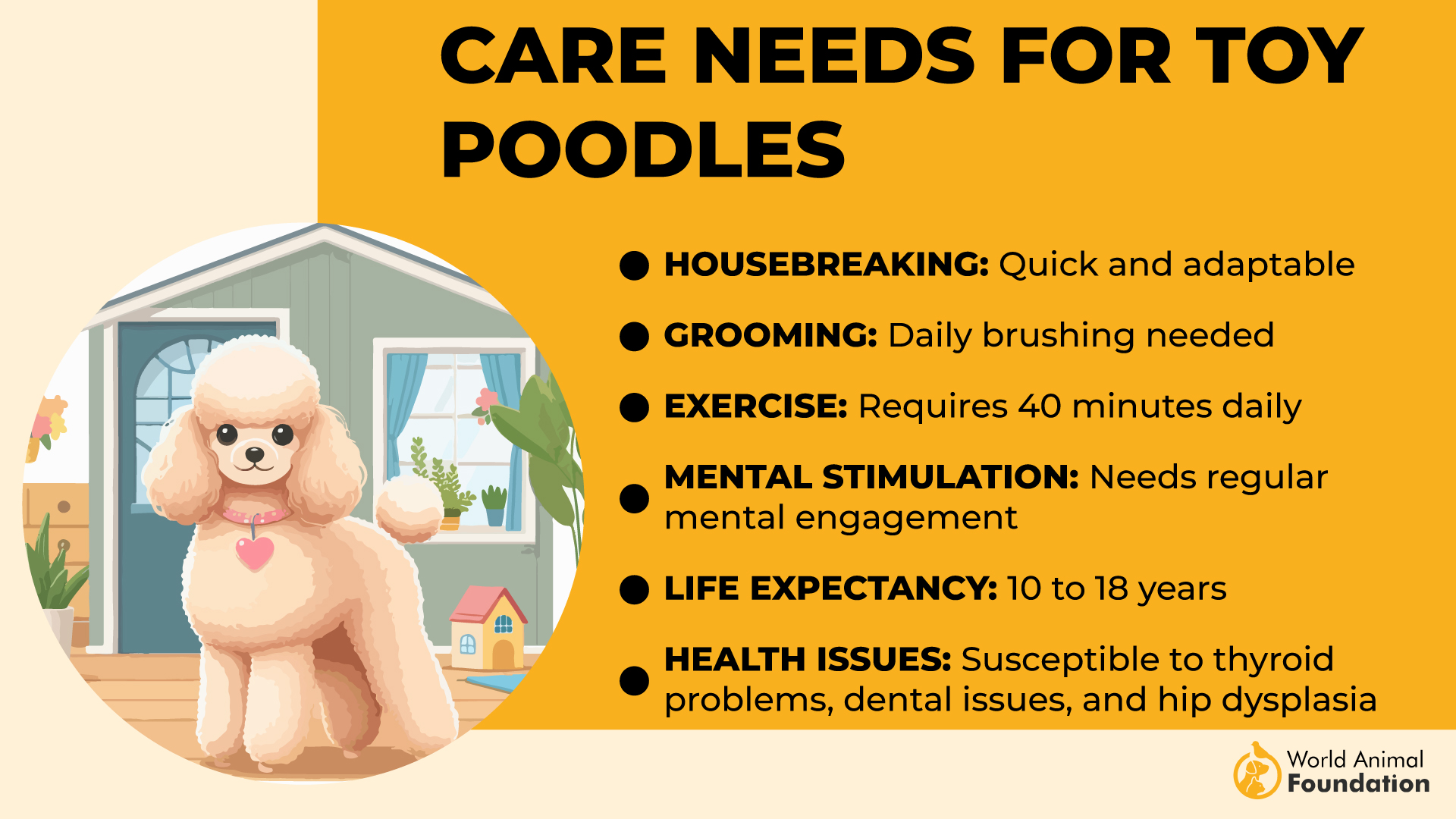
Social but a little wary of strangers, Toy Poodles make excellent watchdogs. They’re quick to alert their owners if something seems off, though they’re not aggressive dogs. Once they warm up to someone, they’re affectionate and devoted. If you’re looking for a small dog with a big personality, a Toy Poodle might just be your perfect match!
Maltipoo Personality
If you want a fluffball to cuddle, the Maltipoo is your go-to pup. A cross between a Maltese and a Toy Poodle, they inherit the affectionate, people-loving nature of both breeds. These little charmers bond deeply with their owners and thrive on human interaction. They’re the kind of dogs that will follow you from room to room, always wanting to be close.
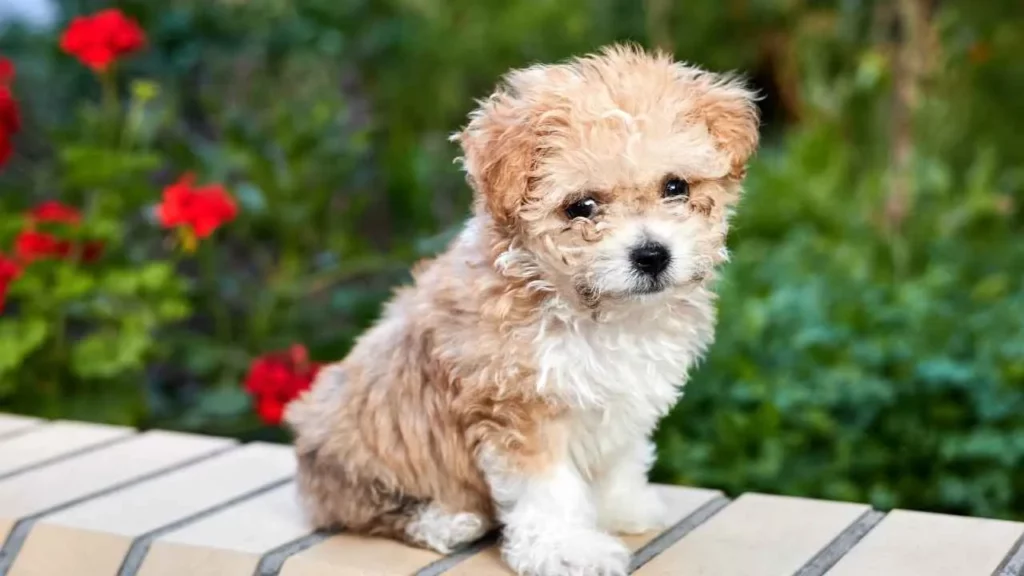
Unlike the high-energy Toy Poodle, Maltipoos have a more relaxed, easygoing vibe. They love to play but are just as happy curling up on your lap. They’re fantastic for families, seniors, or anyone who wants a loyal, low-maintenance companion. But here’s the catch—Maltipoos experience separation anxiety if left alone, states PetMD. They can develop separation anxiety if left for long periods, so they need a home where someone is around most of the time.
Friendly to just about everyone, Maltipoos are social butterflies. They get along well with kids, strangers, and even other pets. They don’t have the “guard dog” instincts of a Toy Poodle, but they’ll make up for it by showering everyone with love. If you want a sweet, affectionate pup that brings constant joy, a Maltipoo is a perfect choice!
Toy Poodle vs. Maltipoo: Coat Type
Toy Poodle Coat Type
The Toy Poodle’s coat is its crowning glory—tight, curly, and completely hypoallergenic. Unlike most dogs, Poodles don’t shed much, making them a great choice for allergy sufferers. But don’t be fooled—this low-shedding coat requires serious upkeep. Without regular grooming, those curls can mat and tangle fast, so brushing several times a week is a must.
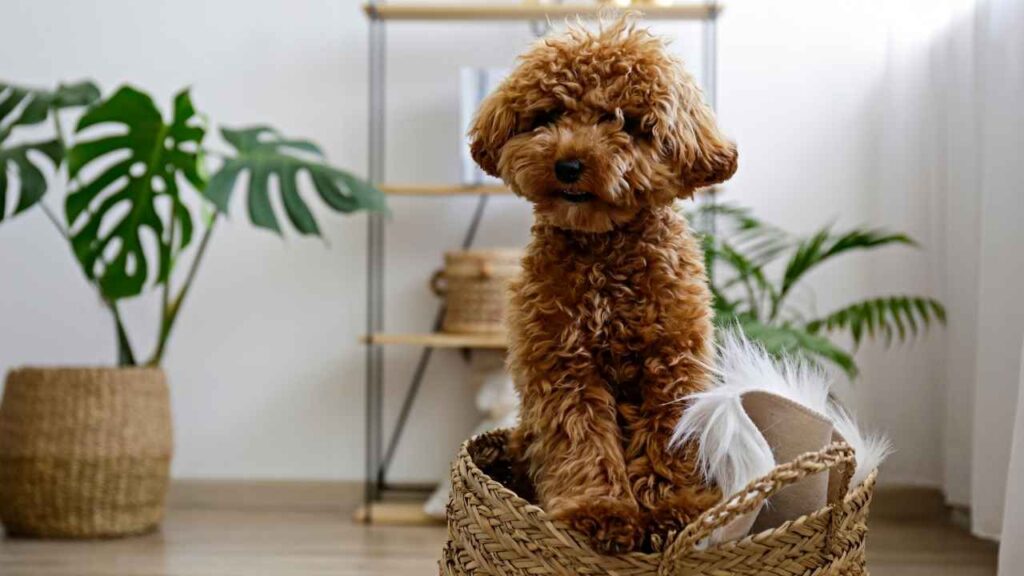
One of the coolest things about a Toy Poodle’s coat? It’s incredibly versatile! Owners can choose from countless grooming styles, from the classic “Poodle cut” to a simple teddy bear trim. Whether you want your pup to look elegant or playful, the options are endless. But be prepared for frequent trips to the groomer—a professional trim every 4-6 weeks is essential to keep that coat in top shape.
Another big perk? Poodles have a single-layer coat, which means they don’t have an undercoat like double-coated breeds. This helps reduce shedding, but it also means they can get cold in winter and may need a sweater or coat in chilly weather. Want a stylish pup that’s also allergy-friendly? The Toy Poodle checks all the boxes!
Maltipoo Coat Type
A Maltipoo’s coat is a total surprise package—no two are exactly alike! Since they’re a mix of a Maltese and a Toy Poodle, their fur can range from soft and wavy to tighter curls, depending on which parent they take after. While they’re often considered low-shedding, some Maltipoos may shed a little more than a purebred Poodle, especially if they inherit more of the Maltese side.
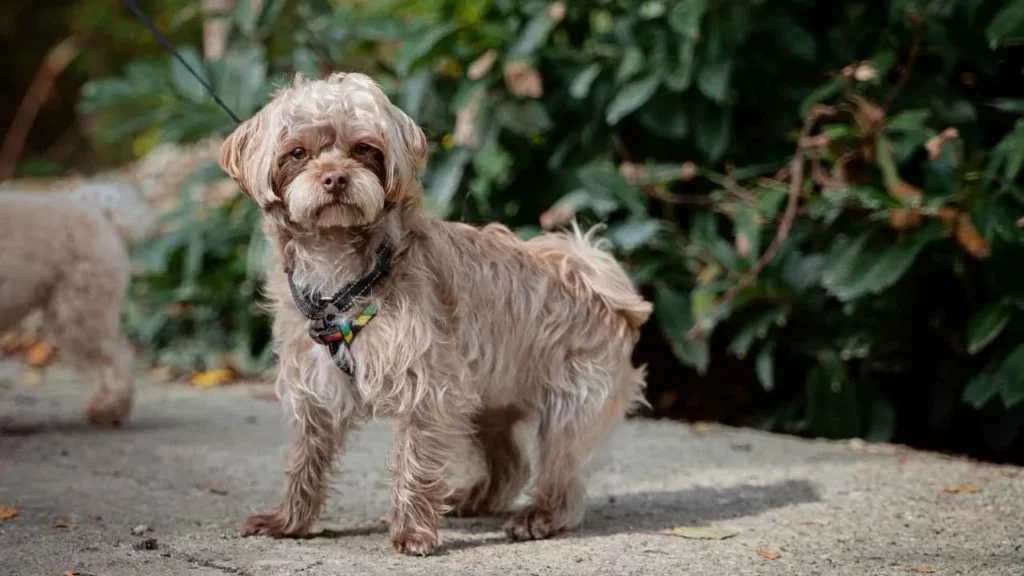
Their fluffy, cloud-like fur is irresistibly soft, but it does come with maintenance. Maltipoos need to be brushed daily, says PetMD. They need brushing to prevent tangles, especially if their coat is wavy or curly. Unlike Toy Poodles, which have a predictable curly coat, a Maltipoo’s fur texture can vary even within the same litter. Some have a silkier coat that’s easier to manage, while others have thicker curls that need more frequent grooming.
Another thing to keep in mind? Maltipoos are prone to tear stains, especially the lighter-colored ones. Regular face cleaning is needed to prevent those reddish-brown marks around their eyes. If you love the idea of a cuddly, plush-coated pup that’s soft to the touch, a Maltipoo might be the perfect fit!
Toy Poodle vs. Maltipoo: Health and Care
Toy Poodle: Health and Care
Toy Poodles may be small, but they’re generally a sturdy and long-lived breed, often reaching 12–15 years or more. However, like all purebred dogs, they have their share of genetic health concerns. Common issues include patellar luxation (knee problems), progressive retinal atrophy (PRA) leading to blindness, and Addison’s disease. Regular vet check-ups can help catch potential health issues early, so proactive care is a must!
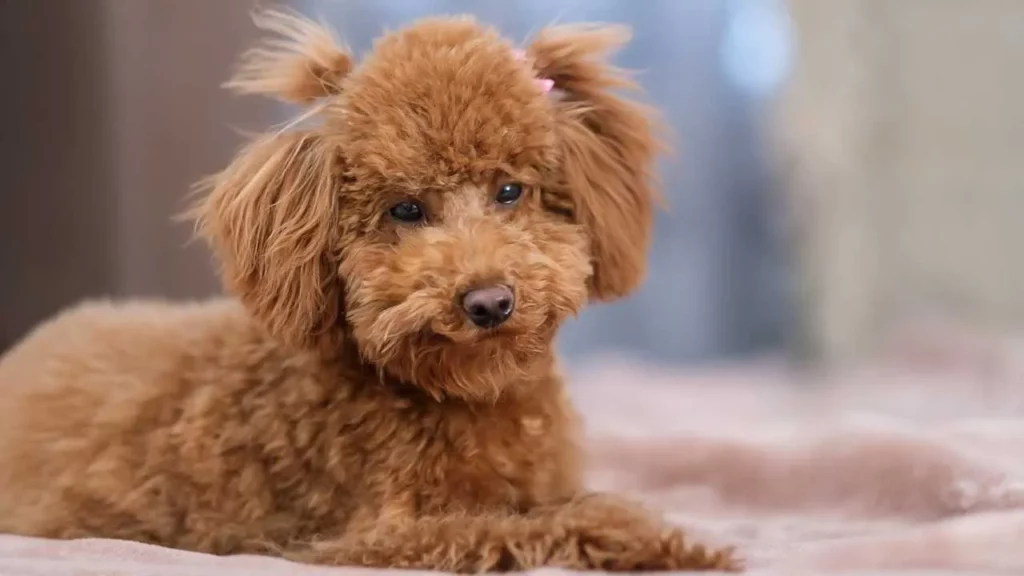
Their curly coat requires regular grooming to prevent mats and tangles. Since Poodles have hair instead of fur, their coat keeps growing—meaning they need a trim every 4–6 weeks. According to Purina, it’s important to clean ears regularly because their floppy ears can trap moisture, leading to infections. And don’t forget dental hygiene! Toy Poodles are prone to dental disease, so brushing their teeth daily (or at least a few times a week) is essential.
Despite their small size, Toy Poodles have a ton of energy! They need daily exercise to stay healthy and happy. A brisk walk, some playtime, and a bit of mental stimulation—like puzzle toys or training sessions—keep them engaged. If not properly exercised, they can become anxious or develop destructive behaviors. Want a dog that’s both elegant and energetic? The Toy Poodle checks all the boxes!
Maltipoo: Health and Care
Maltipoos tend to be healthy little dogs, often living 12–16 years, but as a mixed breed, their health can vary based on genetics. Common health concerns include patellar luxation, White Shaker Syndrome (causing tremors), and dental issues due to their small mouths. They can also inherit eye problems like progressive retinal atrophy (PRA) from their Poodle parent, so routine eye check-ups are important.

Their soft, wavy, or curly coat needs frequent brushing to prevent matting, especially if it leans more toward the Poodle side. Professional grooming every 4–6 weeks helps maintain a neat, tangle-free coat. According to PetMD, ear infections are common in Maltipoo, so regular ear cleaning is a must. And since small breeds often struggle with dental health, brushing their teeth regularly can prevent gum disease and tooth loss.
Maltipoos may be small, but they’re full of energy! They love playtime, short walks, and interactive games. However, they’re not as high-energy as Toy Poodles and can adapt well to apartment living as long as they get their daily dose of exercise. They thrive on companionship, so if left alone for long periods, they may develop separation anxiety. If you want a cuddly, affectionate pup that’s relatively easy to care for, a Maltipoo is a great choice!
Toy Poodle vs. Maltipoo: Lifespan
Toy Poodle: Lifespan
Toy Poodles are known for their impressive longevity, often living 12–15 years and sometimes even longer with proper care. Some Toy Poodles have been known to reach 17+ years! Their intelligence, active nature, and overall good genetics contribute to their long lifespan, but like all breeds, they’re prone to certain health issues. Regular vet check-ups, a balanced diet, and plenty of mental and physical exercise can help ensure they live a long, happy life.
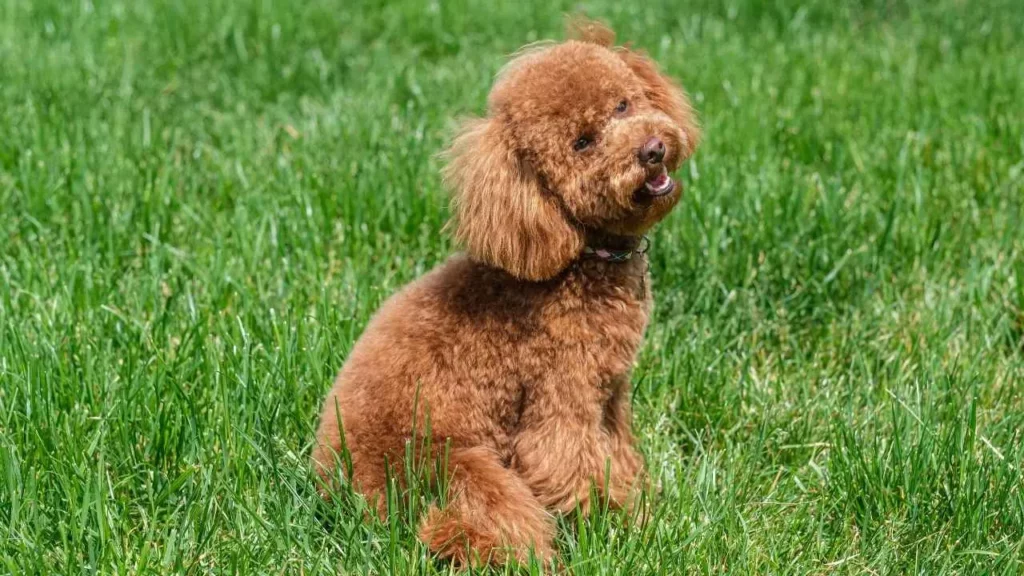
However, their small size makes them prone to injuries. Jumping off furniture, rough handling, or accidents can lead to fractures or joint issues. Keeping them safe indoors and supervising outdoor play is essential to prevent injuries. Additionally, common health concerns like dental disease, patellar luxation, and eye problems should be monitored throughout their life.
Want a dog that stays by your side for over a decade? A well-cared-for Toy Poodle can be a lifelong companion, bringing joy and intelligence to your home for years to come!
Maltipoo: Lifespan
Maltipoos, thanks to their Poodle and Maltese genes, also have a long lifespan, typically ranging from 12–16 years. Since they are a mixed breed, their overall health can vary, but many Maltipoos inherit the strong longevity of their parent breeds. Some even make it to 18 years with excellent care!
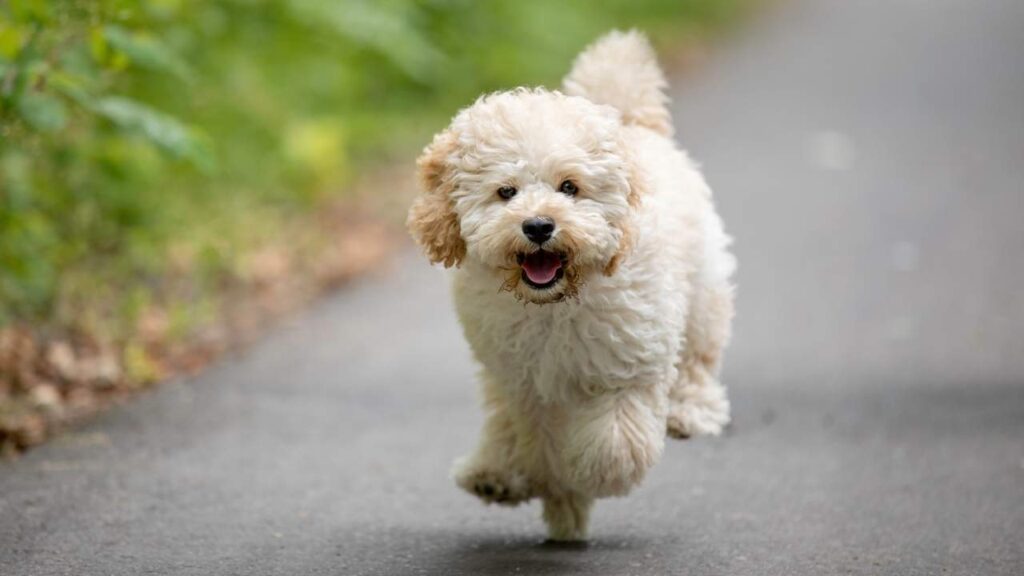
Genetics play a big role, but diet, exercise, and routine vet care are just as important. According to PetMD, Maltipoos are prone to periodontal disease or gum disease, luxating patellas, and heart problems, so early prevention and regular health screenings can add years to their life. Their small size also means they can get hurt easily, so a safe, gentle environment is crucial.
Because they’re so people-oriented, stress and separation anxiety can take a toll on their health. A happy Maltipoo is one that gets lots of love, attention, and engagement. Looking for a loyal, long-term furry friend? A well-cared-for Maltipoo can be your affectionate shadow for well over a decade!
Conclusion
Both the Toy Poodle and Maltipoo are amazing dogs that make excellent companions for pet parents seeking a small dog with a loving personality and affectionate nature. Their small stature makes them suitable for apartments, and both breeds are highly intelligent dogs that excel in training sessions using positive reinforcement. The key difference between the two breeds lies in their heritage: the Toy Poodle is a miniature or toy poodle that has been bred for centuries as a show ring dog, while the Maltipoo is a cross breed developed by Maltipoo breeders to blend the best traits of both parent dogs.
When comparing Maltipoo vs. Toy Poodle, their coat color and grooming needs are crucial factors to consider. The Toy Poodle has a curly coat that requires daily grooming, making it an ideal choice for allergy sufferers due to its low-shedding nature. The Maltipoo puppy, on the other hand, typically inherits a wavy coat from its parent dogs. However, DNA testing from a reputable breeder can help identify potential health problems early on.
In terms of compatibility with families and other pets, both breeds are pet-friendly and get along well with cats, older children, and even other dogs. The Toy Poodle overview suggests that this purebred is often used in competitions due to its intelligence and high family-friendly nature. The Maltipoo, on the other hand, is an excellent good match for first-time owners looking for an affectionate and adaptable companion. While larger dogs may be intimidating for these toy breeds, both the Mini Poodle and Maltipoo can thrive in homes with small children when properly socialized.


